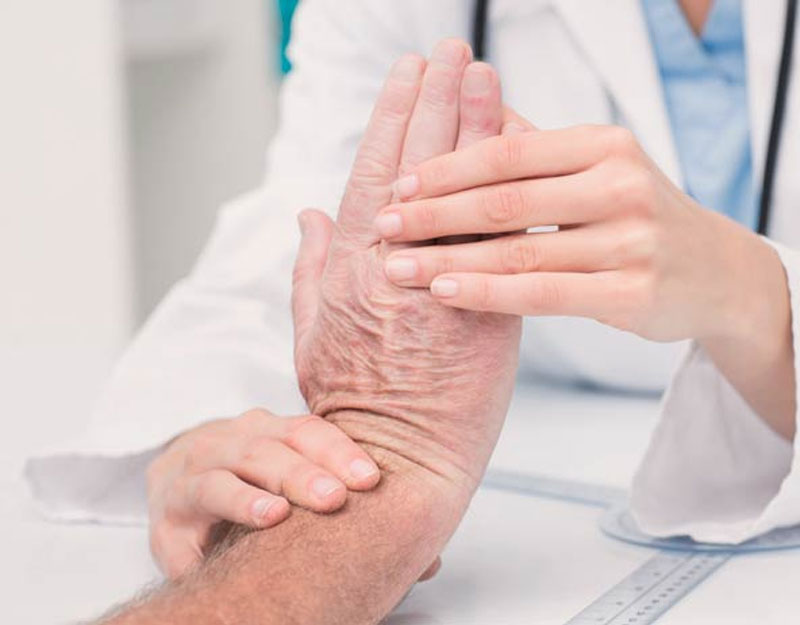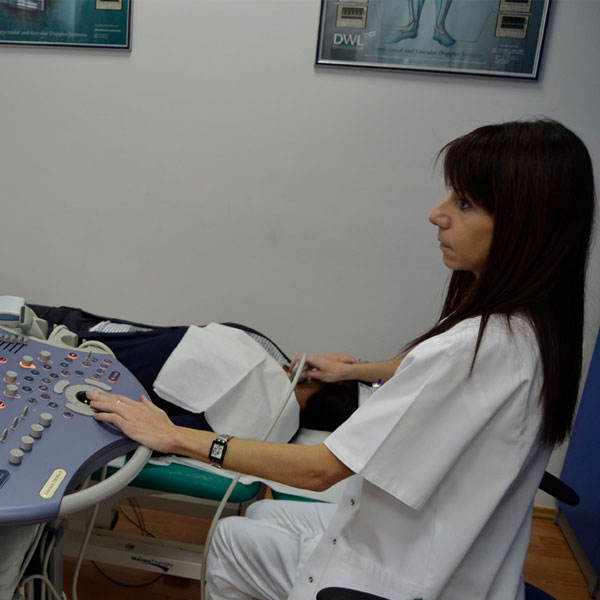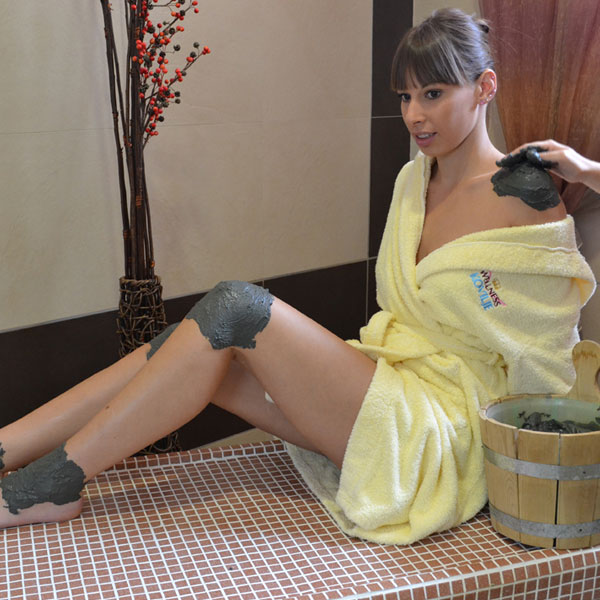Rheumatic diseases
Rheumatic diseases
How do rheumatic diseases manifest?
Rheumatic diseases manifest in changes of the locomotor system and these are most often of unknown etiology. Symptoms include pain and limited movability of the affected joint. Rheumatic diseases include:

Degenerative rheumatism
The affected joint cartilage or intervertebral disc cartilage is damaged. Most often affected joints are hip (coxarthrosis), knee (gonarthrosis), shoulders (ommartrosis), and spine (spondylosis). Feet and hands are not so often affected.

Inflammatory rheumatism
Includes all diseases where a pathological process is some inflammatory change. Most common diseases are rheumatoid arthritis, rheumatic fever, ankylosing spondylitis.

Metabolic diseases of joints and bones
These occur due to changes in metabolism. Most common are osteoporosis and gout (uric arthritis).

Soft tissue rheumatism
Changes occur not in joints but around it, i.e. in the tendons, ligaments, bursae, and muscles.
Arthritis rheumatoides (Rheumatoid arthritis)

Rheumatoid arthritis (RA) is a chronic, inflammatory, systemic disease, with progressive and unpredictable course, mainly manifested in hand, feet and knee joints. If it is not treated, it results in irreversible damage and deformities of joints, loss of joint function with higher or lower level of invalidity, and considerably impaired quality of life. During the later course of the disease, in 20-70% of patients it manifests in some other systems of organs.
In inflammatory rheumatic diseases, when the disease is active and discomfort is worsening, with inflammatory signs in affected joints and increased values of erythrocyte sedimentation rate, the common practice was that these patients were not administered warm mineral mud and water during the spa treatment because this could result in stimulating inflammatory process in joints and worsening of basic disease and general condition. With this, empirically and scientifically proved favorable effect of these natural therapies originating from their specific mineral and chemical composition, was taken away from these patients.
Since 2012, in Specialized Rehabilitation Hospital Banja Koviljaca, a unique application of cold mineral mud and water has been actual, and this opened a new possibility for management of inflammatory rheumatic diseases such as rheumatoid and any other arthritis even during their active phase. With this new method of applying mineral water and mud at lower temperature, inflammatory process in affected joints has been reduced due to cooling effect with already proved beneficial effect of their mineral composition which, in every rheumatic disease, results in reducing joints pain intensity, withdrawal of symptoms, swelling reduction and improvement in joint function.
Significance of ultrasonography in diagnostics of rheumatoid arthritis

Rheumatoid arthritis manifests in joint structures. It belongs to the group of systemic connective tissue disorders. Women are affected 2-3 times more than men, incidence increases with age until the seventh decade, and it is the highest in a period between 40 and 60 years. Inflammation starts in the synovial membrane which lines the inner surface of a joint and it provides nutrients to joint cartilage and creation of synovial fluid.
The origin of the disease is gradual and it manifests as tiredness, exhaustion and general weakness, loss of appetite, and body weight loss. Prodromal stage may last for weeks and months until symptoms typical for RA occurs: symmetric arthritis, pain, swelling, sensitivity and increased local temperature of small joints in hands and feet, as well as in wrists with reduced movability accompanied with morning stiffness. In later stages, out of joint manifestations, such as rheumatoid nodules, vasculitis and serositis occur.
Development of ultrasonography for the past 10 years has enabled use of ultrasonography in diagnostics for musculoskeletal system. The advantage of ultrasonography in comparison to CT, MRI and X-rays is complete absence of ionizing radiation, relatively low price of examination and broad availability of the device. Ultrasonography can differentiate pathological changes in muscles, joints. Ultrasonography helps in making early diagnosis of rheumatic diseases, differential diagnosis for some conditions, and monitoring of the disease course.
It is not possible to view the inner structure of a bone, but the bone cortex and cartilage can be viewed. Foreign bodies are hyperechogenic and these can be viewed best when located within hypoechogenic tissues such as muscles. Hematoma in muscles occurred due to injury can be viewed and in this way localization of hematoma is possible.
How to combat rheumatoid arthritis?

If it is discovered in time and treated with adequate therapies, there is a cure for arthritis.
Rheumatoid arthritis is inflammatory rheumatic disease, broadly widespread. It most often occurs between 4th and 6th decade. Women until their menopausal period are affected 2 to 3 times more than men. At older ages, after 50, this difference decreases. Despite it is widespread, a cause of the disease is still unknown.
Genetics, environmental factors and modified immune response all have a role in occurrence of the disease. The disease most often manifests with pain and joint swelling accompanied with morning stiffness of joints which may last for hours. At the beginning, changes are located in small joints of hands, feet, wrists and shoulders. Not so rarely, before changes are exhibited in joints, general signs such as tiredness, exhaustion, increased body temperature, loss of appetite occur.
If it is late with making diagnosis, and consequently in providing adequate treatment, permanent deformities develop in later stages of the disease. Modern laboratory analysis enables detection of increased parameters which indicate this disease. Ultrasonography has a precious role in early detection of this disease. Already in the first 6 months, some changes which indicate rheumatoid arthritis can be found. If the disease was present for more than a year, changes in bones and joints are visible in X-ray image. It was believed that rheumatoid arthritis should be treated slowly, carefully. Now, generally accepted stance is that diagnosis should be made as earlier as possible and start with the treatment immediately. Balneo physical treatment has a particular place in the treatment of arthritis. Rheumatoid arthritis is successfully treated in Specialized Rehabilitation Hospital Banja Koviljaca. The treatment is done with sulphuric water and mud, exercises, electrical and magnetic therapies, ultrasound and laser.
The key to success in management of arthritis
- Early diagnostics
- Aggressive approach with medical treatments
- Starting with baleno physical treatment supervised by a physician in timely manner
